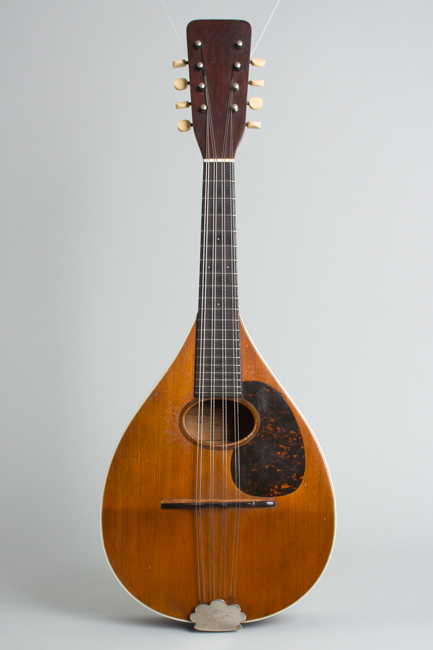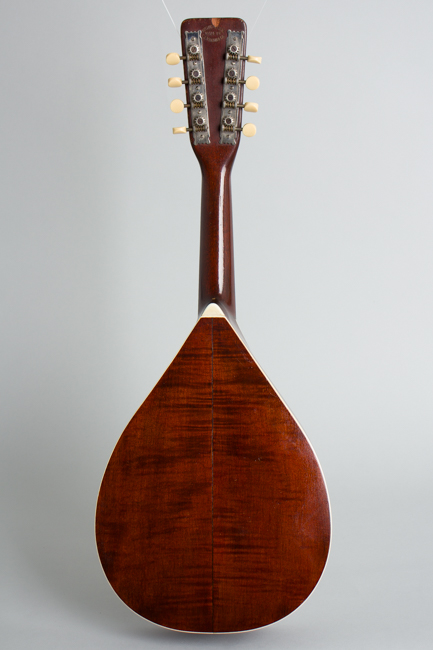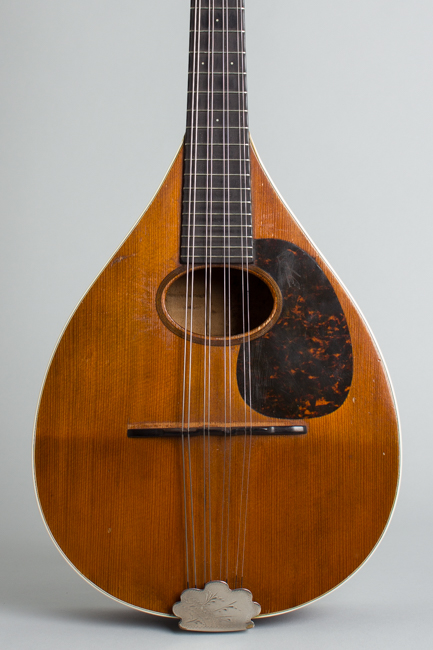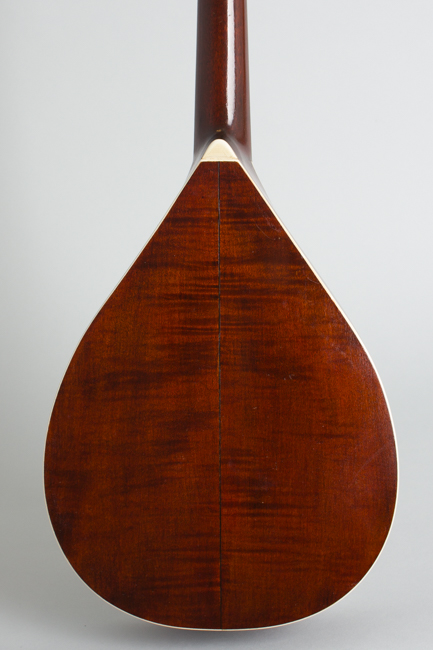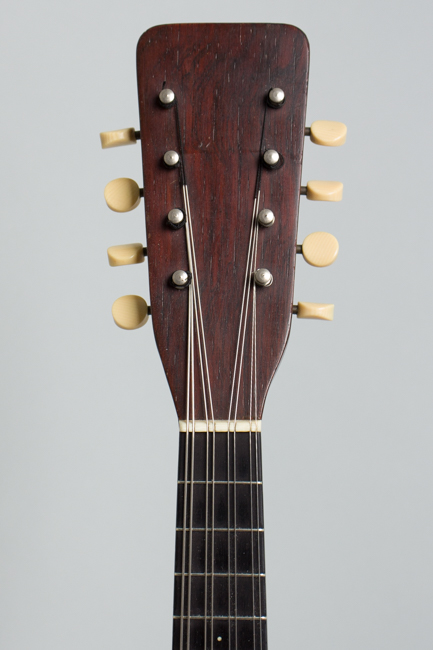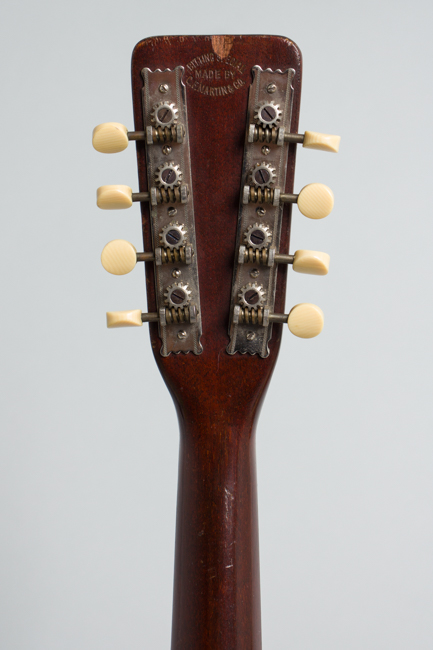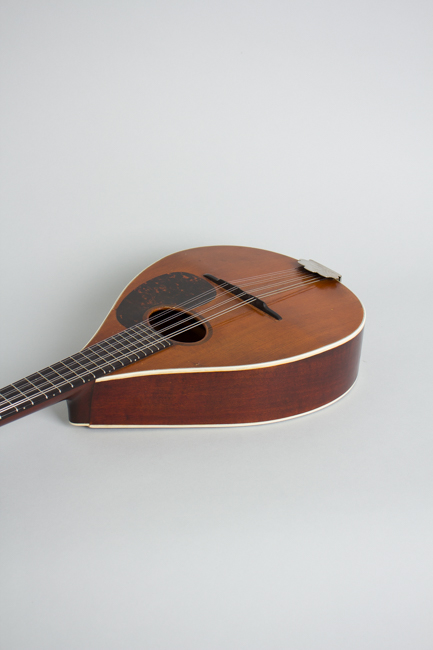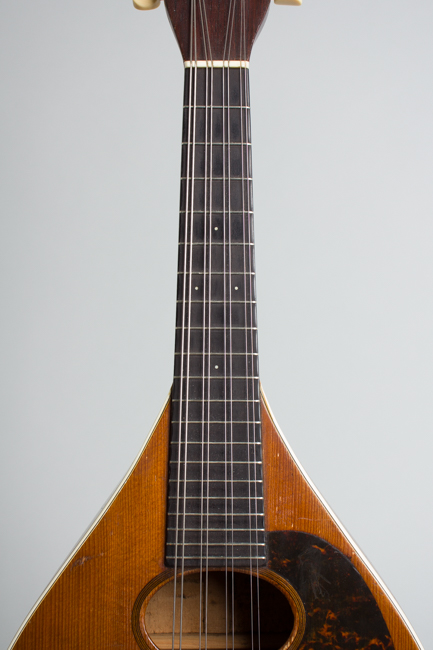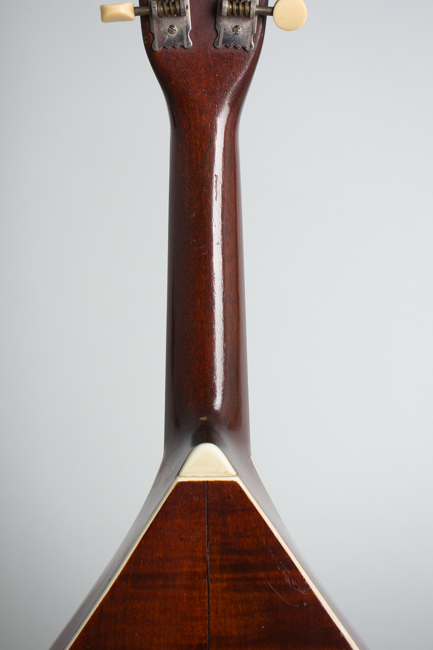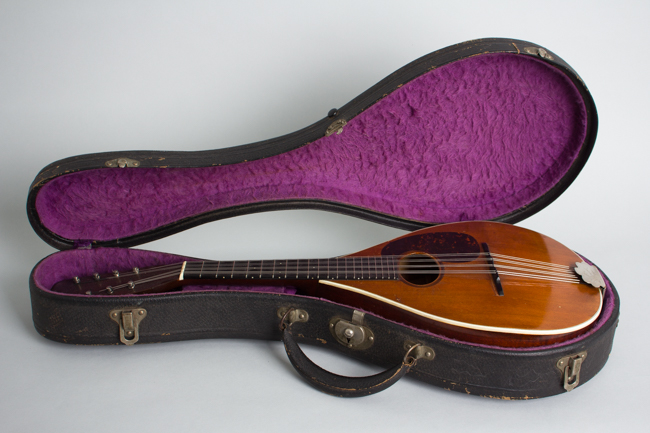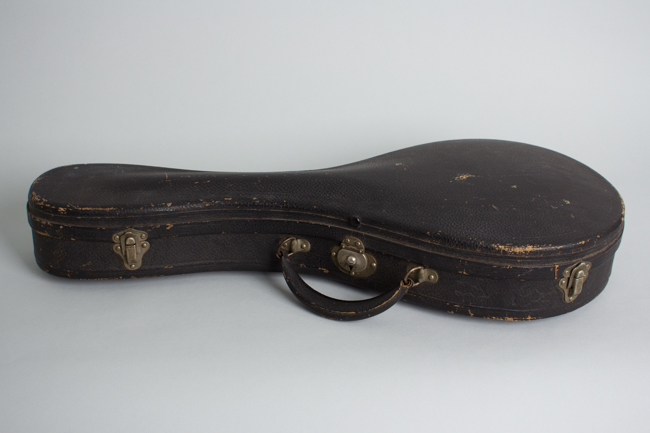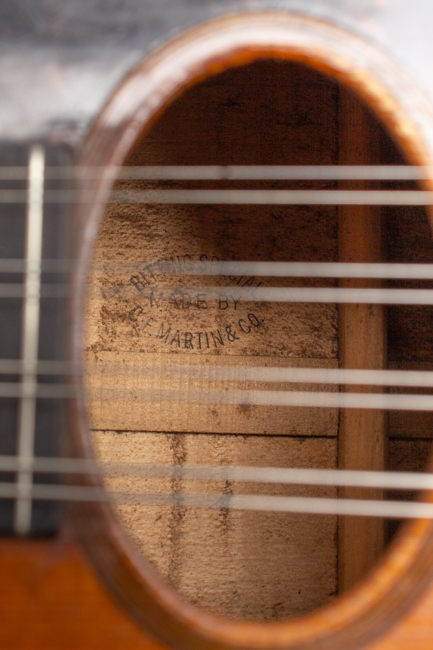Bitting Special Flat Back, Bent Top Mandolin, made by C. F. Martin (1917)
This item has been sold.
Item # 12264
Prices subject to change without notice.
Bitting Special Model Flat Back, Bent Top Mandolin, made by C. F. Martin (1917), made in Nazareth, PA, serial # 5126, shaded varnish finish, maple back and sides, spruce top, mahogany neck with ebony fingerboard, period black hard shell case.
This early and slightly unusual Martin mandolin is an interesting variant on the flat-back Style A, which first appeared in 1914. The "Bitting Special" mandolins were private label pieces made for a local teacher from 1916-1918. These were similar to the Style A, the company's most basic flat back 8-string offering, but unusual in being built with a maple body instead of the rosewood and mahogany usually used. This gives the instrument a noticeably different sound, brighter but also very punchy and less delicate than the typical Martin tone.
The style A in general is a plain but very effective design that remained in production for many decades with only minimal changes. This "Bitting Special" has a darker shaded (but not sunburst) finish overall, triple bound on the top and single bound on the back. The tortoise celluloid pickguard is neatly inlaid into the top in bowlback fashion. This WWI era mandolin is built somewhat lighter than the commonly found later Style A examples, and the maple body adds another sonic dimension. Only 40 of these "Bitting Special" mandolins were made over a 3 year span, 27 in this peak production year 1917. This is a unique very low production model with a truly distinctive character in both look and sound.
Overall length is 24 in. (61 cm.), 9 1/8 in. (23.2 cm.) across at the widest point, and 2 1/2 in. (6.4 cm.) in depth at side, taken at the end block. Scale length is 13 in. (330 mm.). Width of nut is 1 1/8 in. (29 mm.).
This mandolin is a lovely survivor, showing signs of use over the past 105 + years but no major repairs or heavy wear and still sounding lovely indeed. The very thin original varnish finish has dings, dents, scrapes and some lightly mottled areas but no really heavy wear. A chip off the back edge of the headstock is the only notable wood damage, but does not affect the instrument in any functional way. The ebony fretboard was trued some time ago and it appears the original bar frets were re-inserted as this thin bar wire has been largely unobtainable for decades. The instrument is currently strung with Thomastik strings and is a fine player with a more powerful and fine tone than most Martin 8-strings we have heard. It lives in a very nice period HSC that is a good but inexact fit; we suspect it once held a Vega or other similar mandolin. Overall Excellent - Condition.
This early and slightly unusual Martin mandolin is an interesting variant on the flat-back Style A, which first appeared in 1914. The "Bitting Special" mandolins were private label pieces made for a local teacher from 1916-1918. These were similar to the Style A, the company's most basic flat back 8-string offering, but unusual in being built with a maple body instead of the rosewood and mahogany usually used. This gives the instrument a noticeably different sound, brighter but also very punchy and less delicate than the typical Martin tone.
The style A in general is a plain but very effective design that remained in production for many decades with only minimal changes. This "Bitting Special" has a darker shaded (but not sunburst) finish overall, triple bound on the top and single bound on the back. The tortoise celluloid pickguard is neatly inlaid into the top in bowlback fashion. This WWI era mandolin is built somewhat lighter than the commonly found later Style A examples, and the maple body adds another sonic dimension. Only 40 of these "Bitting Special" mandolins were made over a 3 year span, 27 in this peak production year 1917. This is a unique very low production model with a truly distinctive character in both look and sound.
Overall length is 24 in. (61 cm.), 9 1/8 in. (23.2 cm.) across at the widest point, and 2 1/2 in. (6.4 cm.) in depth at side, taken at the end block. Scale length is 13 in. (330 mm.). Width of nut is 1 1/8 in. (29 mm.).
This mandolin is a lovely survivor, showing signs of use over the past 105 + years but no major repairs or heavy wear and still sounding lovely indeed. The very thin original varnish finish has dings, dents, scrapes and some lightly mottled areas but no really heavy wear. A chip off the back edge of the headstock is the only notable wood damage, but does not affect the instrument in any functional way. The ebony fretboard was trued some time ago and it appears the original bar frets were re-inserted as this thin bar wire has been largely unobtainable for decades. The instrument is currently strung with Thomastik strings and is a fine player with a more powerful and fine tone than most Martin 8-strings we have heard. It lives in a very nice period HSC that is a good but inexact fit; we suspect it once held a Vega or other similar mandolin. Overall Excellent - Condition.
